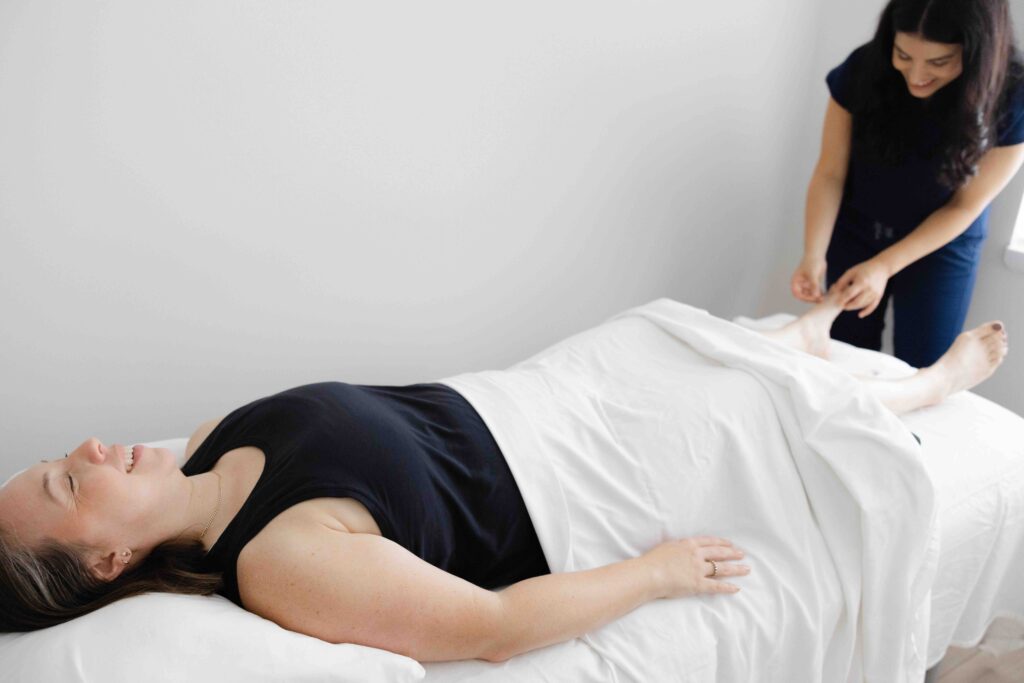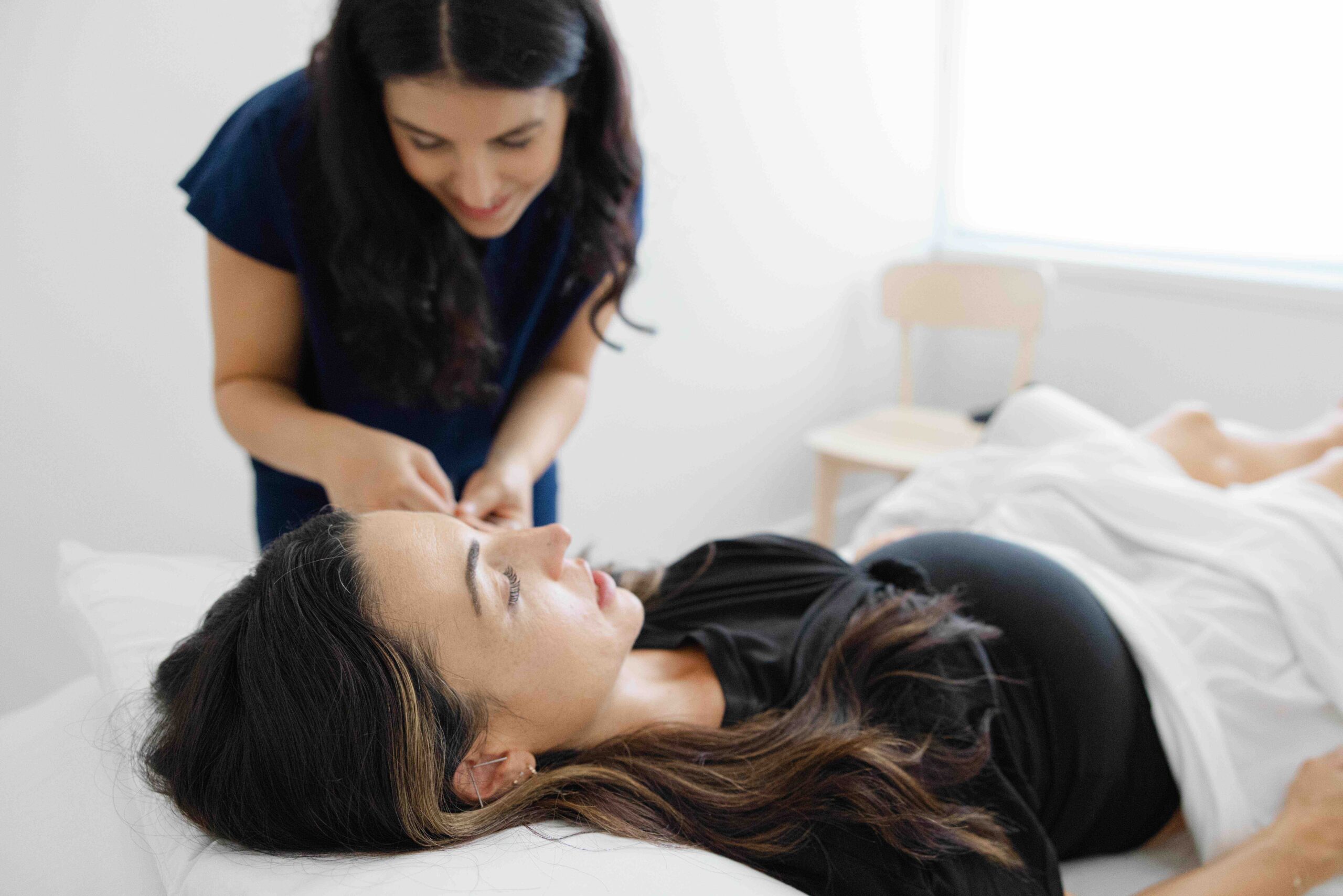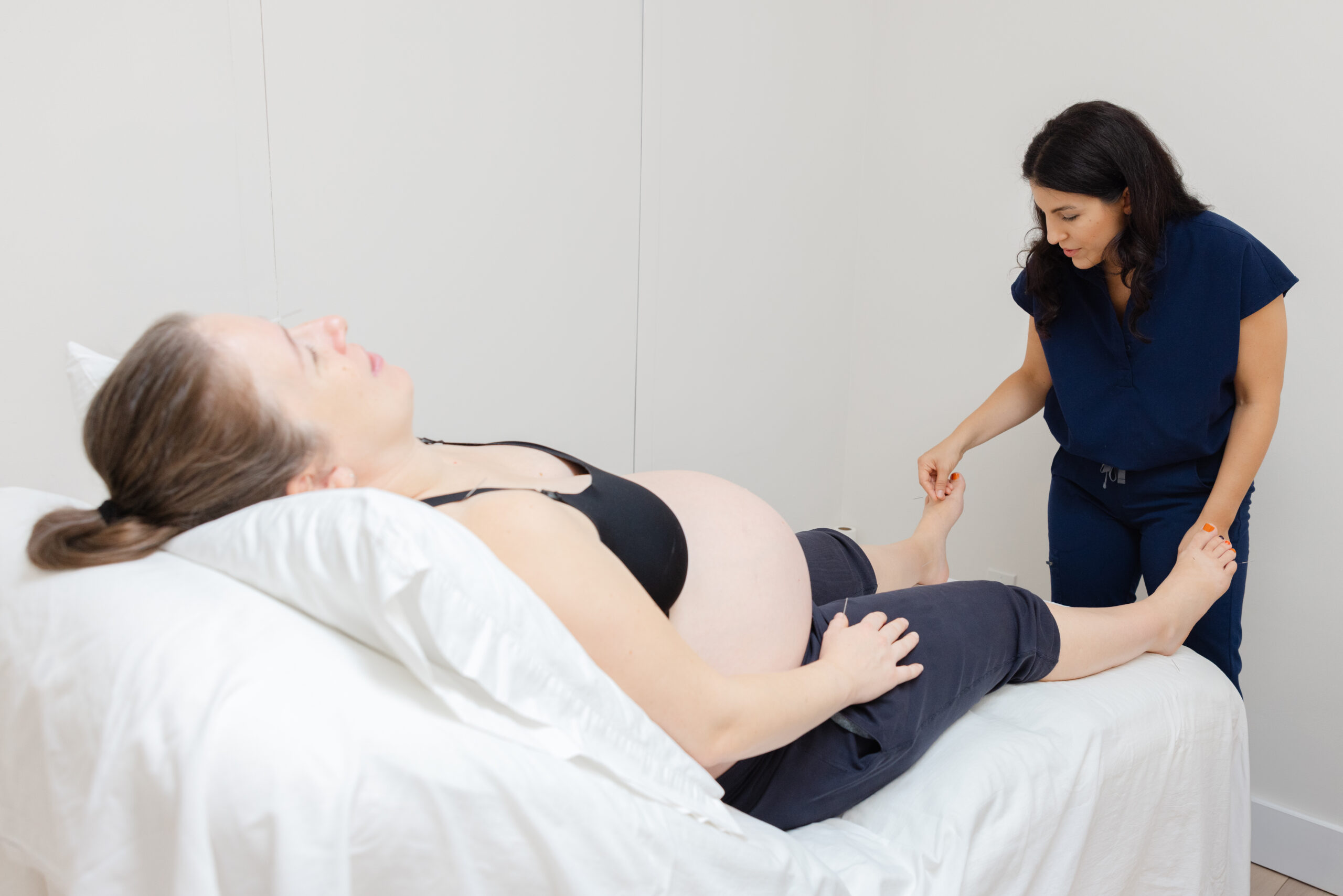Babies often twist and turn during pregnancy, and breech presentation is common in the second trimester of pregnancy. While the incidence of breech presentation is high before 28 weeks, most fetuses will turn to a head-first position by 36 weeks. About 7-15% of babies remain breech at 32 weeks, and 3-4% at birth. 1 A baby coming bottom or feet first can face more difficulty during birth, increasing the likelihood of complications for both mother and baby, and often leading to a cesarean section.
In many Western countries, breech presentation is an indication for elective cesarean section. Your provider may attempt to turn the fetus if it does not turn on its own.
Conventional care to turn a breech baby to a cephalic presentation (i.e. head down, facing the birth parent’s back, with the chin tucked to the chest) may involve the use of an external cephalic version (ECV), a procedure requiring close medical monitoring. While this method has been shown to be more effective than no intervention, the success rate remains relatively low.2 However, growing evidence suggests that moxibustion alone or in combination with acupuncture may assist in turning breech babies to a cephalic position.3,4 Additionally, many expectant mothers seek alternative interventions, such as moxibustion, to encourage cephalic version.5
Moxibustion, a traditional technique that stimulates acupuncture points with heat, is frequently recommended in acupuncture texts for breech presentation. This technique involves using a compressed herb, often in the form of a cigar-like moxa stick. The procedure entails holding a lighted moxa stick near the acupuncture point BL 67, located on the little toe. While the precise mechanism by which moxibustion influences fetal position remains unclear, research has shown that moxa emits long-wavelength infrared radiation.6 It has been suggested that stimulating BL 67 promotes the production of maternal hormones (placental estrogens and prostaglandins), which encourage uterine contractions and may increase fetal activity. 7
Scientific Evidence Behind Moxibustion & Acupuncture for Breech Babies
An updated Cochrane review published in 2023 found that moxibustion, when combined with usual care, likely reduces the number of breech presentations at birth more effectively than usual care alone or sham (fake) moxibustion. 3 The study also found that moxibustion plus usual care likely reduces the use of oxytocin, a hormone used to initiate or enhance contractions during labor.
The first Western studies on acupuncture and moxibustion for breech presentation was conducted by Neri et al. 4 This study, included in the Cochrane review, examined pregnant Italian women between 33 and 35 weeks gestation carrying a fetus in breech position. Participants were enrolled in a randomized, controlled trial comparing active BL 67 stimulation with an observation group. Neri et al. concluded that acupuncture combined with moxibustion was more effective than observation alone in turning breech babies and appeared to be a viable option for women seeking a natural birth.
Our Clinical Experience
At Aetherium, we have observed a significantly high success rate in turning breech babies, with a 97% success rate. In the few instances where babies did not turn, anatomical factors were often the reason, making ECV either not an option or unsuccessful.
In our practice, we apply the recommended moxibustion dosage found to be effective in both studies and acupuncture texts.8,9 Additionally, we assess any underlying disharmonies that may be preventing the baby from turning into the correct position. We typically recommend daily application of moxibustion for 20 minutes bilaterally until the baby turns, a protocol we have found to be highly effective.
Because moxibustion involves burning mugwort, there is a potential risk of respiratory irritation due to the smoke. To mitigate this, we provide smokeless moxibustion, ensuring patient comfort and reducing any associated risks.
When Moxibustion May Not Be Recommended
During our consultations, we assess whether moxibustion is appropriate for each patient. We generally do not recommend this treatment for turning a baby in the following situations10:
- Twin pregnancies
- Previous cesarean section for breech position
- High blood pressure
- Bleeding during pregnancy
- Rhesus-negative blood type
Patient Experience and Outcomes
Most of our patients report feeling comfortable during treatment, often experiencing increased fetal movement and mild uterine contractions. Additionally, many patients describe feeling more relaxed, sleeping better, and experiencing reduced anxiety following treatment. Minimal adverse events have been reported, making this a safe and effective option for those seeking a natural approach to encourage cephalic version.
If you’re interested in acupuncture and moxibustion for breech presentation, schedule a consultation with us at Aetherium today!
🔗 Book an Appointment
References
1 Hickok DE, Gordon DC, Milberg JA, Williams MA, Daling JR. The frequency of breech presentation by gestational age at birth: a large population-based study. Am J Obstet Gynecol 1992;166(3):851-2. https://www.ajog.org/article/0002-9378(92)91347-D/abstract
2 Hutton EK., Hofmeyr GJ, Dowswell T. External cephalic version for breech presentation before term. Cochrane Database Syst Rev 2105: doi: 10.1002/14651858.CD000084.pub3.
3 Coyle ME, Smith C, Peat B. Cephalic version by moxibustion for breech presentation. Cochrane Database of Systematic Reviews 2023, Issue 5. Art. No.: CD003928. DOI: 10.1002/14651858.CD003928.pub4. Accessed 29 January 2025.
4 Neri, I., Airola, G., Contu, G., Allais, G., Facchinetti, F., & Benedetto, C. (2004). Acupuncture plus moxibustion to resolve breech presentation: a randomized controlled study. The Journal of Maternal-Fetal & Neonatal Medicine, 15(4), 247–252. https://doi.org/10.1080/14767050410001668644
5 Smith, CA, Betts, D. The practice of acupuncture and moxibustion to promote cephalic version for women with a breech presentation: Implications for clinical practice and research. Complementary Therapies in Medicine 2014;22:75—80
6 Pach D, Brinkhaus B, Willich SN. Moxa sticks: thermal properties and possible implications for clinical trials. Complementary Therapies in Medicine 2009;17:243-6.
7 Cooperative Research Group of Moxibustion Version of Jangxi Province. Further studies on the clinical effects and mechanism of version by moxibustion. Abstracts of the Second National Symposium on Acupuncture, Moxibustion, and Acupuncture Anesthesia; 1984 Aug 7-10; Beijing, China. 1984:150-1.
8 Betts D. The Essential Guide to Acupuncture in Pregnancy & Childbirth. Hove: Journal of Chinese Medicine Publications 2006
9 Deadman P, Al-Khafaji M, Baker K. A Manual of Acupuncture. London: Journal of Chinese Medicine Publications 2001
10 West, Z. (2008). Acupuncture in pregnancy and childbirth. Elsevier Health Sciences.


